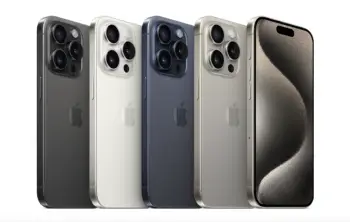
Top 5 iPhone 15 features that Apple might have “borrowed” from the competition
It’s a well-established practice that phone makers usually like to “borrow” features from each other when they launch a new phone, especially when those features are in demand. A good example would be the fingerprint sensor, where ever since Apple included it in their iPhones, it was quickly adopted by many other Android phone makers.
That being said, with the iPhone 15 just being announced, some Android fans might have noticed some features of the phone that might have been present in other Android devices. If you’re wondering about these similarities, here they are!
USB-C
USB-C in smartphones has been pretty standard on Android devices for years, but Apple stubbornly held out while continuing to push its Lightning connector. Only with the iPhone 15 Apple decided to make the switch, but the company can’t really be blamed for “copying” this feature.
This is because it is due to an EU law that makes USB-C mandatory, so unless Apple wants to sit out of the entire EU market, they had no choice but to comply. It’s kind of strange in a way. Apple has been more than happy to adopt USB-C for its iPads and its MacBooks, so it is unclear why they were holding out when it came to their iPhones, but better late than never!
Periscope telephoto camera
Pretty much all smartphone cameras offer zoom capabilities to a certain degree, but with the iPhone 15, Apple introduced a periscope telephoto lens. If this sounds familiar, it is because it is hardly a new feature. In fact, Huawei introduced the tech to the Huawei P30 Pro way back in 2019.
Hardly groundbreaking, am I right?
3D video recording
Remember way back in the day when some smartphone makers thought glasses-free 3D displays were going to be the next big thing? To support 3D content, some phone makers such as HTC introduced stereoscopic video recording, which basically means that the cameras on the phone can shoot 3D video.
This is something that Apple has introduced to the iPhone 15 Pro and Pro Max devices, although the company is calling it Spatial Video, but for all intents and purposes it’s the same thing. While hardly a new feature, it makes sense for Apple to adopt this as it will help iPhone users record videos that will be supported by the upcoming Vision Pro headset.
Action button
The new iPhone 15s come with an Action Button similar to that of the Apple Watch Ultra. This replaces the mute switch and allows users to customize what the button does. Sounds new? Hardly.
For years, many Android phones have long supported the ability for users to customize the actions of the physical buttons on their phones, including Samsung’s Galaxy S-series which had a dedicated Bixby button that could also be configured to do other things other than launching Bixby.
Titanium build
If you opt for the more expensive iPhone 15 Pro models, they come with a titanium body that’s lighter than stainless steel, but Apple wouldn’t be the first to use the material in a phone’s chassis.
In fact, the Essential Phone could be considered the first to utilize the material in its phone build. Granted it was a titanium trim, but still. That being said, other companies have been rumored to adopt the material for future handsets, including the Samsung Galaxy S24 series and the Xiaomi 14.
Conclusion
At the end of the day, it’s not surprising that Apple is “borrowing” some features from its Android rivals. To a certain extent, you might even consider some of these features to be “essential” or the natural progression of things, like the use of USB-C or the periscope camera.
Apple isn’t alone in their practices either. We’ve seen how some handset makers have tried copying Apple too when Apple first launched iPhones with pressure-sensitive displays, or when Dynamic Island debuted on the iPhone 14 Pro series and other smartphone companies tried to implement something similar of their own.
It’s a vicious cycle that will probably never end, but in a way it’s good because if you’re an iPhone user not planning on switching to Android anytime soon, at least now you’ll be getting some features that we’re sure some iPhone users wish they had!